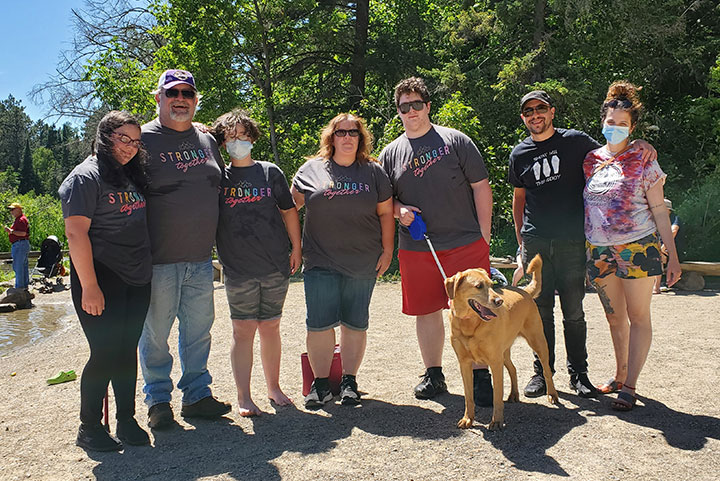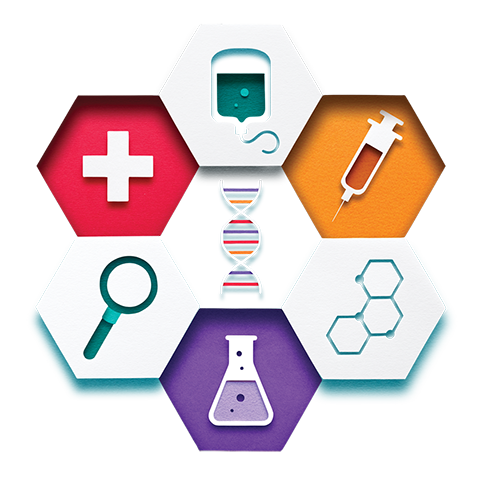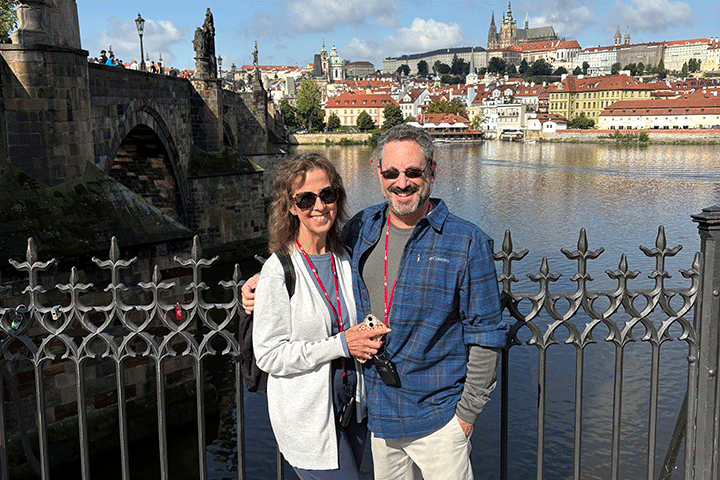Have Hope

- Jaundice leads to stage IV diagnosis
- Traveling for a second opinion
- FOLFIRINOX/FOLFIRI chemotherapy
- Maintenance with 5-FU
My journey began with skin. Yellow skin, to be exact.
I was approaching my 60th birthday in March 2019 when I went to see my cardiologist. At the office they noticed my skin had a yellow tinge and recommended that I go to the ER ASAP. I went to the Genesis Health System Illini Campus in Silvis, Illinois, not far from my home. At the hospital one test led to another. After CT scans and numerous blood tests, I was diagnosed with stage IV pancreatic adenocarcinoma. The doctors also found hundreds of nodules in my lungs. I was then taken to the University of Iowa for an ERCP. Pancreatic cancer was confirmed via a scraping they took while placing a stent in my bile duct.
Not a Lot of Room for Hope
Being diagnosed with stage IV pancreatic cancer doesn’t leave a lot of room for hope. I didn’t need anyone to tell me the odds because I already knew them. I lost my mother to pancreatic cancer in 2008. She was misdiagnosed badly for several months prior to her initial diagnosis of stage IV pancreatic cancer. Her treatment was delayed getting second and third opinions. She passed before she could get her first chemo treatment. At that time there was a one-year survival rate of about 8 percent. The data on the positive end of the spectrum has only moderately improved since then. I was determined to be much more aggressive in seeking treatment.
The doctors and nurses hung their heads low when we first discussed my prognosis at U of Iowa Hospitals. I was told that I would never be a candidate for surgery due to my stage IV diagnosis. They said they were still optimistic, but the look in their eyes said something different. I was told to find an oncologist locally but while I was waiting for that first appointment, I filled out an inquiry to the Mayo Clinic; 45 minutes later I had a phone call and appointments for the following Monday. I was evaluated in Rochester, Minnesota, before I was able to be seen locally. That’s about 150 miles from where I live, but it was worth the trip.
Even with all of that in my head, I didn’t lose sight of hope. I am a dad and a Navy veteran. I have a wife and three kids. My daughter is a third-degree black belt. My son just turned 18 and voted for the first time. I had a lot to live for and I was hopeful we could get through it together.
Many Rounds of Chemotherapy
The doctors at Mayo determined I was not a surgical candidate and recommended FOLFIRINOX chemotherapy, the standard of care for my cancer. I returned home for treatment at Genesis, and Mayo provided all the information they had to my local oncologist, Dr. David Spector. Dr. Spector started me on FOLFIRINOX chemotherapy. For each session I sat through eight hours of infusion at the cancer center followed by an additional two days of infusion with a wearable chemo pump. It’s not a gentle treatment path.
I am actually grateful for having a rocky start with chemo. The first treatment resulted in severe abdominal cramping for two days. I mentioned this to my doctor and he added Atropine to my routine. I didn’t have issues after that. My advice: talk to your medical professionals!
Return of Hope
A month into my treatment, my doctor checked my CA 19-9. My levels had dropped from 5600+ units to less than 500. It was the first feedback I got since starting treatment that provided me with hope that “stuff” was working. After 15 rounds of FOLFIRINOX I was switched to FOLFIRI, which causes fewer side effects.
Two months into treatment I did my first CT scan. The results showed that the nodules in my lungs were disappearing. Also, the mass on my pancreas showed no signs of spreading or growing. This was further indication that we were on the right path. By six months into therapy, my antigen numbers were approaching normal. My CT scans had trouble finding any nodules in my lungs and the radiologist found signs that the tumor was shrinking.
Throughout the treatment I experienced weight gain from the steroids, many bouts of diarrhea and, of course, exhaustion. The treatment was rough, but it ended up extending my life. Coincidentally, I was diagnosed with pancreatic cancer at the same time as Alex Trebek. I was lucky to be more responsive to treatment than he was.
During treatment I underwent genetic testing. Despite my mother having the same cancer, no mutation was found.
Normal Numbers
Fast forward eight months into treatment: my CA 19-9 number was 35. The normal range is 0-35. This meant I was normal again! Plus the CT scans showed small gains in shrinking the tumor in my pancreas. News of my normal antigen numbers led to my family’s first real celebration since the start of this roller coaster ride. I had a chemo break in 2020 until a scan showed nodule growth and my CA 19-9 jumped from an average between 6 and 9 to 67!
Another fast forward to December 2020. The antigens remained at a normal level. The radiologist’s report showed no evidence of metastatic disease anywhere. It also stated that a discrete pancreatic mass could not be visualized. In other words, there was no more cancer in my body. For the first time since starting this ride, I cried.
My chemotherapy continued but I took an eight week break in December 2022 through January 2023 so I could have knee surgery to repair a torn meniscus. It was like jumping from one barrel of fun to another that’s equally fun!
As of April 2023, my CA 19-9 reading is 5. There is some atrophy of my pancreas, but there is no evidence of metastatic disease in my body—how boring! There is no evidence of any pancreatic tumor and no evidence of swelling of lymph nodes.
I have received 78 rounds of chemotherapy—15 rounds of FOLFIRINOX, and 60 rounds of FOLFIRI, and seven rounds of FOLFIRI without irinotecan and steroids. I get bloodwork every two weeks prior to chemo. I recently started a 5-FU “maintenance” routine of chemo with infusions every two weeks. I have completed 3 rounds of this “chemo light” regime. I get CT/PET scans quarterly.
Over the last four years Mayo and Dr. Spector have formed a partnership for my treatment. I started doing all of my scans at Mayo after they read my scans from Genesis and provided an eight-page analysis that identified things the local radiologists missed. So since then, I’ve been getting approximately quarterly second opinions from the doctors at Mayo.
Increasing the Positive Data
There isn’t a lot of positive data available for people like me. But good news and good stories (like mine) are out there! I hope that my story can provide hope to anyone else with a similar diagnosis. Plus, the positive outcome of my journey must have increased the overall odds for everyone else!
I can’t say enough good things about the doctors and nurses I have interfaced with. The infusion center nurses are amazing and I’ve made many, many forever friends. I love them all. I love Mayo and wish they were close enough to be my primary care. The organization is so very patient-centric. I always felt like I was their only patient. My local guys are great, but they just don’t have the same level of resources.
Right now I am happiest because of my family. My oldest son is at Western Illinois University as a performance music major; my second son is a high school sophomore; and my daughter was just named 8th grade salutatorian and is going to test for her 3rd degree black belt in Taekwondo. All three are black belts in Taekwondo.
My wife and kids have been my heroes. They did all my shopping and all the heavy lifting. Just having them here means everything to me. I could not have done it without them. They have been my rocks.
One more thing that continues to be fulfilling for me is advocating for others with cancer. I’m active on social media, follow other patients on their journeys, and have shared my story and lots of information with others—including what I have found useful on Let’s Win PC!
My best advice for everyone else? Have hope.







